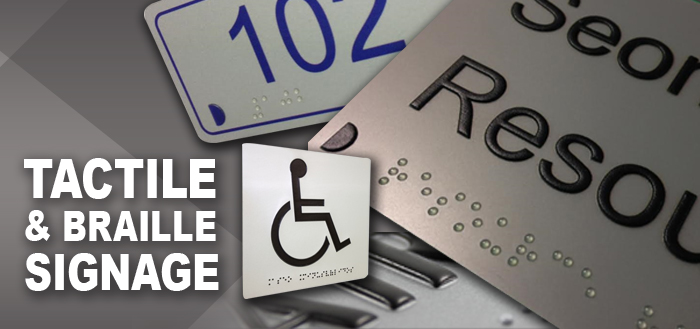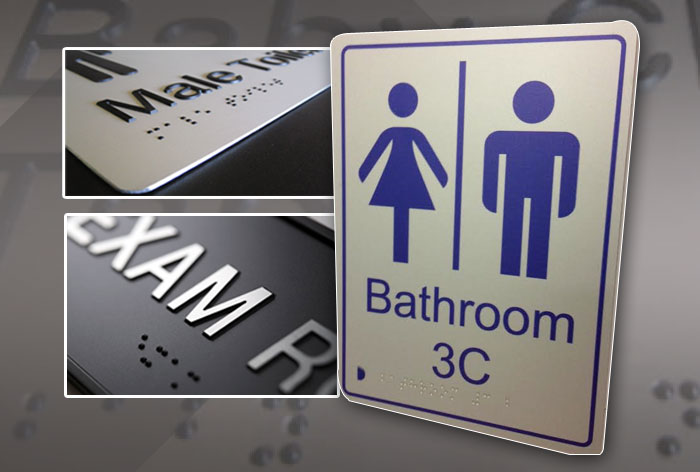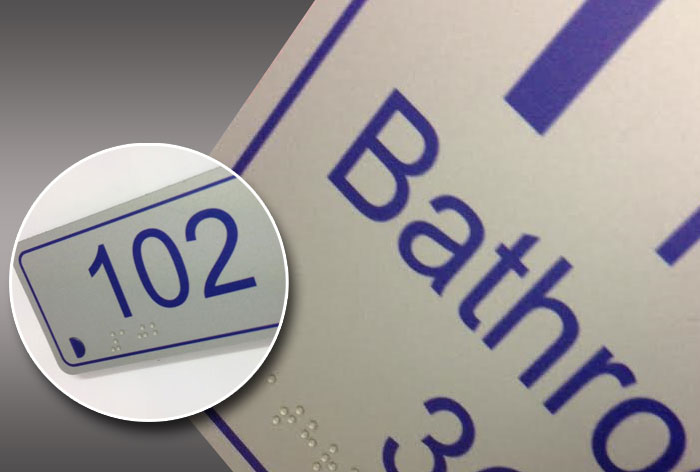Since October 2004, the Disability Discrimination Act (DDA) requires service providers to display accessible signage providing blind and partially sighted people with information equal to that for sighted people. This means that schools, colleges, leisure centres and all other government buildings with public access as far as practicable have arrangements for the communication of information in Braille, Sign and Oral Formats
Braille signs are placed in public buildings and found in many locations, such as on elevators or next to doors to show locations. Braille is also commonly found on elevator buttons. Tactile and Braille signs are considered assistive technology and are used to help blind and visually impaired people find their way around a building.
In order to bring companies into compliance, it is important to work closely with a sign company experienced in outfitting buildings with assistive technology signs. These sign companies can help your business into compliance by conducting a site survey and creating a comprehensive list of all the signage that will be needed.
Our tactile signs are made from PVC with raised lettering and are suitable for use for partially sighted people or people with learning difficulties. The fonts used on assistive technology signs are also regulated and cannot be changed for a design decision or to match the decor of the building. The sign maker should also have knowledge of, and access to, the required fonts, sizes, sign colors, and readability guidelines needed. Additionally, the graphics — called pictograms — also have certain height and placement requirements, which the experienced sign maker will know. Creating the proper sign the first time can save hundreds of euros in costs for compliance issues that may arise later. Make sure that the sign company you use knows the rules and regulations and can guide you properly through the process.
Every building manager and compliance officer is motivated to meet all the regulations surrounding different tactile and Braille signage around their buildings.
In order to meet all the government requirements, it is important to work with a sign manufacturer with experience in this area who has ready access to the different materials, pictograms, fonts, and guidelines necessary to make the correct signs.
For more information about Tactile and Braille signs:
Contact Sign Solutions on (0402) 29951 – email: info@signsolutions.ie – www.signsolutions.ie















